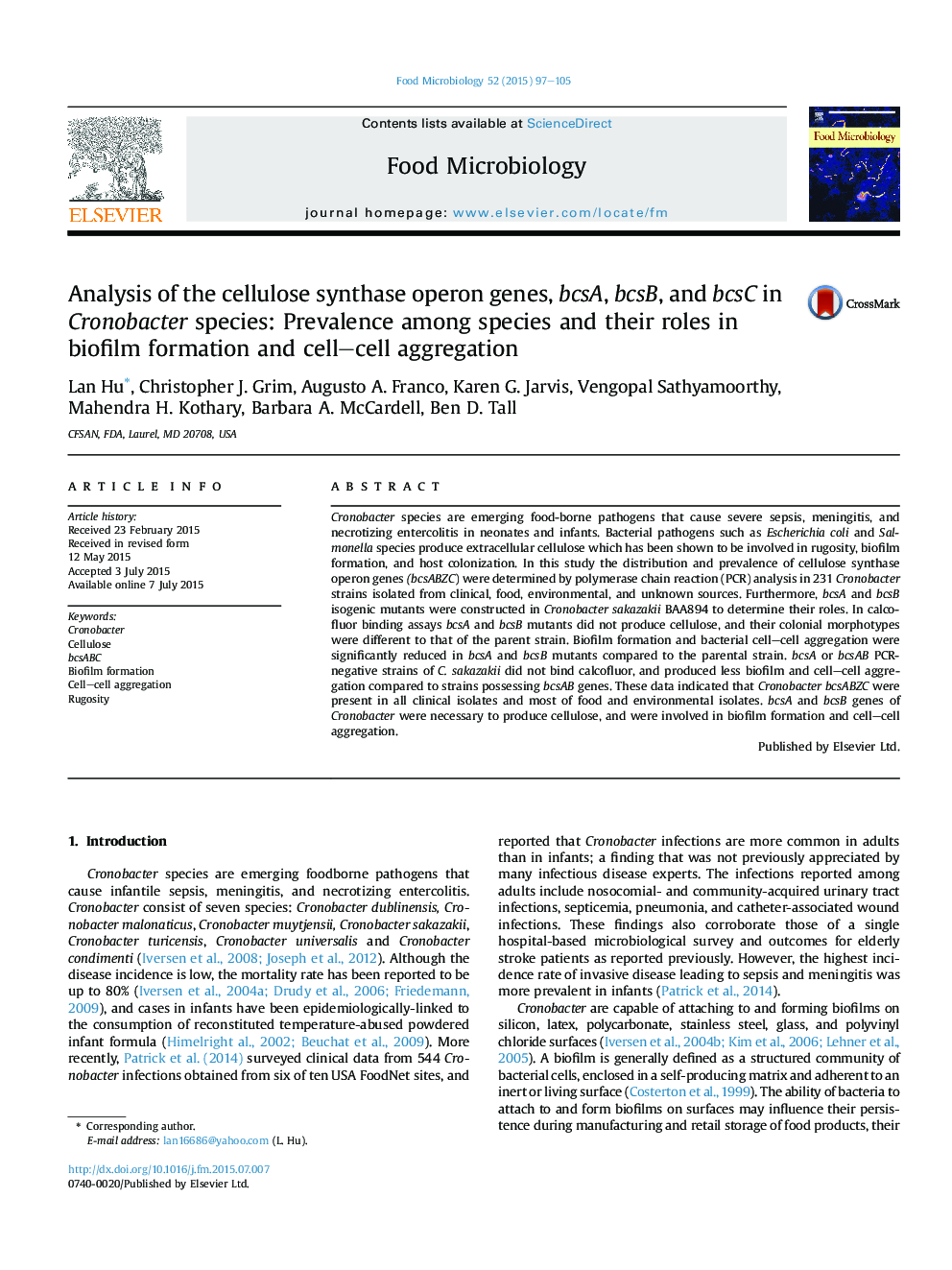| Article ID | Journal | Published Year | Pages | File Type |
|---|---|---|---|---|
| 6288446 | Food Microbiology | 2015 | 9 Pages |
Abstract
Cronobacter species are emerging food-borne pathogens that cause severe sepsis, meningitis, and necrotizing entercolitis in neonates and infants. Bacterial pathogens such as Escherichia coli and Salmonella species produce extracellular cellulose which has been shown to be involved in rugosity, biofilm formation, and host colonization. In this study the distribution and prevalence of cellulose synthase operon genes (bcsABZC) were determined by polymerase chain reaction (PCR) analysis in 231 Cronobacter strains isolated from clinical, food, environmental, and unknown sources. Furthermore, bcsA and bcsB isogenic mutants were constructed in Cronobacter sakazakii BAA894 to determine their roles. In calcofluor binding assays bcsA and bcsB mutants did not produce cellulose, and their colonial morphotypes were different to that of the parent strain. Biofilm formation and bacterial cell-cell aggregation were significantly reduced in bcsA and bcsB mutants compared to the parental strain. bcsA or bcsAB PCR-negative strains of C. sakazakii did not bind calcofluor, and produced less biofilm and cell-cell aggregation compared to strains possessing bcsAB genes. These data indicated that Cronobacter bcsABZC were present in all clinical isolates and most of food and environmental isolates. bcsA and bcsB genes of Cronobacter were necessary to produce cellulose, and were involved in biofilm formation and cell-cell aggregation.
Related Topics
Life Sciences
Agricultural and Biological Sciences
Food Science
Authors
Lan Hu, Christopher J. Grim, Augusto A. Franco, Karen G. Jarvis, Vengopal Sathyamoorthy, Mahendra H. Kothary, Barbara A. McCardell, Ben D. Tall,
